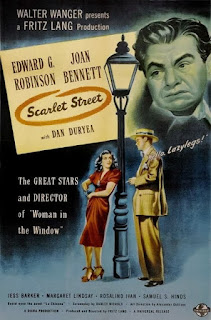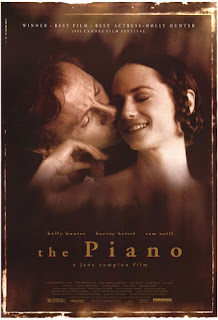November 21st: SCARLET STREET (Fritz Lang, 1945)
A lowly sales clerk who paints as a hobby gets mixed up with a beautiful woman and her sadistic criminal boyfriend.
Fritz Lang was a pioneering giant of the silent film era, his epic Metropolis one of the most influential productions of all time. Escaping Germany shortly after Hitler rose to power, he quickly landed in Hollywood with a prominent status at MGM Studios. Over the next 20+ years he made a variety of films, including social message dramas and westerns, but made his biggest impact with his crime stories that would be come to be known as part of the Film Noir genre (and originated with his iconic thriller M).
In 1944 Lang directed two noirs, Ministry of Fear based on Graham Greene's novel, and The Woman in the Window for writer-turned-producer Nunnally Johnson's new independent studio. The success of the latter film led Lang to reunite with three of its stars just a year later for an adaptation of the French novel La Chienne, previously made into a film by the esteemed director Jean Renoir in 1931.
The cast includes the returning Edward G. Robinson (Double Indemnity), Joan Bennett (Suspiria, TV's Dark Shadows), and Dan Duryea from The Woman in the Window, as well as other character actors. The three leads play roles very similar to the ones from the previous film.
Also returning was cinematographer Milton Krasker (All About Eve, The Seven Year Itch). The screenplay was written by Dudley Nichols (Bringing Up Baby, Stagecoach). Paintings shown in the film were done by John Decker, a studio art department worker who also painted portraits of some of Hollywood's biggest stars. They were shown the following year in an exhibit at the Museum of Modern Art in New York City.
Visually, the film continues the tradition of German Expressionism that Lang helped to create back home, and part of what gave Film Noir its distinction. The look is matched by the bleak conclusion of the plot and the fates of the main characters.
Lang had trouble protecting the story's content not only with producer Walter Wanger, but with the Hays Production Code Office, the board permitted by Hollywood to censor its films. He managed to make a convincing argument to retain his desired ending. Despite this, the film was still banned in the state of New York and the cities of Atlanta and Milwaukee over indecency and obscenity issues. It wound up being one of Universal Pictures most successful films to date.
Running time is approx. 100 minutes.










Comments
Post a Comment